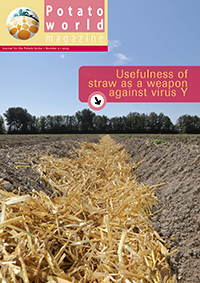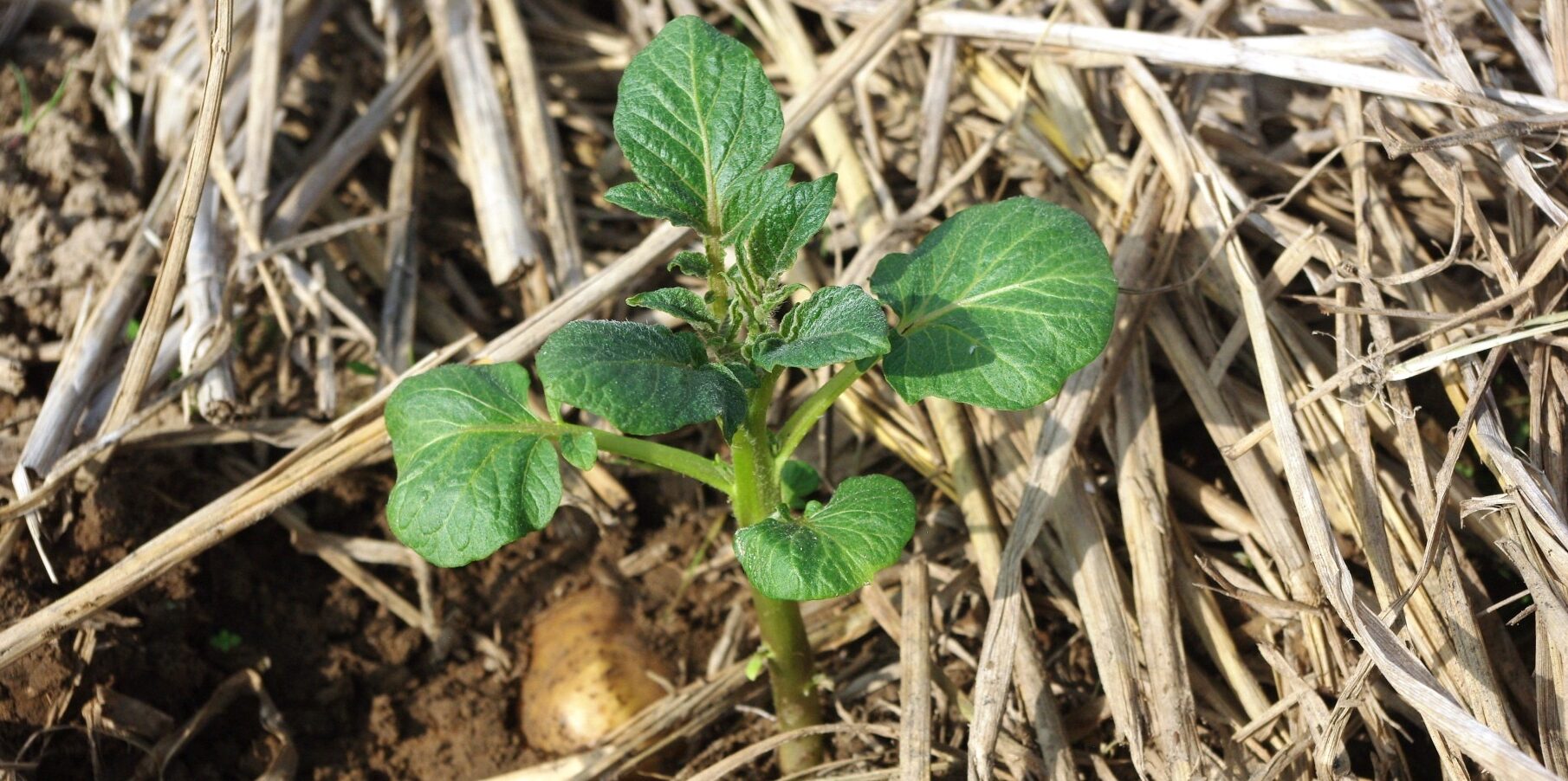Already a subscriber? Activate your premium account

Potatoworld Magazine

In the process of photosynthesis, units of solar radiation (photons) penetrate the leaf, enter the chlorophyll and excite the enzymes in the rubisco. The energy subsequently is used to create energy containing adenosine triphosphate (ATP) by phosphorylating adenosine diphosphate (ADP): ADP + P + energy -> ATP.
ATP is formed from a phosphate ion (P) with ADP thanks to solar energy or energy released by respiring sugars. ATP is the molecule that is used to deliver energy where it is needed in cells of the potato plant. The energy is needed elsewhere in the plant to assemble substances for growth and development such as enzymes, sugars, amino acid and starch in an inverse reaction: ATP -> ADP + P+ energy.
When a plant is subjected to unfavorable conditions such as heat, drought, or some herbicides, the photon does excite the chlorophyll that mounts to a higher energy level, but when other reactions fail, the chlorophyll loses its energy and drops back to its original energy level. It then emits a photon at a slightly different wavelength than that entered. This emission of once-absorbed radiation is called chlorophyll fluorescence and the degree of fluorescence is a measure of the degree of drought experienced by the plant. Fluorescence is measured with a small device. The observation can be used as one of the tools used in decision support on water management in potato production.
Events
©2015 - 2024 Potatoworld | Webdesign and realisation COMMPRO